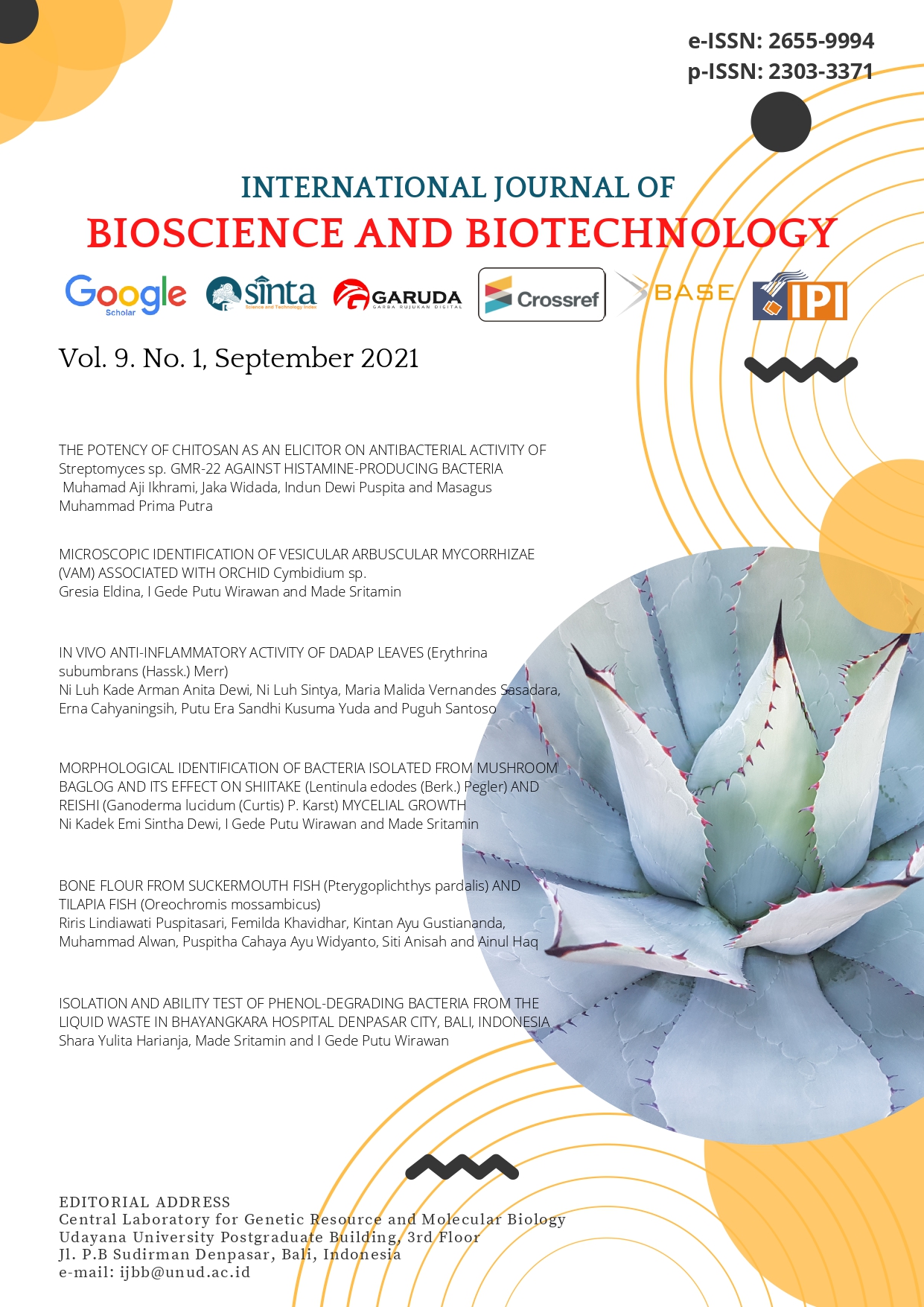THE POTENCY OF CHITOSAN AS AN ELICITOR ON ANTIBACTERIAL ACTIVITY OF Streptomyces sp. GMR-22 AGAINST HISTAMINE-PRODUCING BACTERIA
Abstract
Streptomyces is a Gram-positive bacteria that produces the largest secondary metabolite compounds. The results of whole-genome sequence analysis showed that Streptomyces can carry more than 30 Biosynthetic Gene Clusters (BGC) encoding secondary metabolites that have the potential to be explored in the exploration for new bioactive compounds. However, not all BGC can be expressed in the laboratory scale and requires a specific activation method. This study aims to explore the potential of chitosan as an elicitor compound to activate and or increase the antibacterial activity of Streptomyces sp. GMR-22 was tested against histamine-producing bacteria (HPB) Morganella morganii TK7 and Citrobacter freundii CK1. Chitosan was added to the fermentation medium with the final concentration of 250, 500, and 750 µg/ml while without the addition of chitosan used as control. Fermentation was carried out for 10 days at room temperature, with constant agitation 200 rpm. The supernatant was separated by centrifugation at 3500 rpm for 15 minutes, then fractionation with ethyl acetate, concentrated by vacuum rotary evaporator, and freeze-dried. The test for antibacterial activity was carried out by the microdilution method with an extract concentration of 100 mg/ml. The test results of the microdilution method showed that the addition of chitosan successfully increases the antibacterial activity with the highest activity shown by the water fraction of 250 µg/ml addition of chitosan which effective in inhibiting the growth of Morganella morganii TK7 and Citrobacter freundii CK1 by 97,29% and 97,92% respectively.






